Review by Devin Grier
On 28 November 2017, Rianna Walcott rounded up our last presentation of the first semester. Rianna is nearing the end of her first year as a digital humanities PhD student at King’s College London, having completed undergraduate and Masters degrees in English Literature at the University of Edinburgh. Her doctoral research, evolving from her Masters dissertation, considers the notion of ‘whiteness’ within black spheres. She is currently examining the use of language by black women and women of colour in closed and secret Facebook groups, and the extent to which these groups are able to provide space to critique whiteness.
 The experience of blacks in postcolonial Britain provided the starting point for Rianna’s presentation. Whilst the arrival of the SS Empire Windrush in 1948, carrying almost 500 Jamaicans, was not the first landfall made by people of African descent to Britain, it marked the first influx of widespread migration from the West Indies to the United Kingdom. In the mid-twentieth century, the increase in Afro-Caribbean immigrants provoked a political backlash from those intent on preserving Britain’s imperial image. Rianna argued that anxieties among the white population resulted from a combination of racial and national identities. In order to differentiate themselves from the West Indians, a familiar white ‘we’ was constructed against a dangerous ‘black’ unknown. Because race and nationality became linked, being ‘British’ was predicated on white history. Rianna argued that it was at this point that Britain “was beginning to be disrupted by the black other – or more accurately by a black other that dared to enter white space.”
The experience of blacks in postcolonial Britain provided the starting point for Rianna’s presentation. Whilst the arrival of the SS Empire Windrush in 1948, carrying almost 500 Jamaicans, was not the first landfall made by people of African descent to Britain, it marked the first influx of widespread migration from the West Indies to the United Kingdom. In the mid-twentieth century, the increase in Afro-Caribbean immigrants provoked a political backlash from those intent on preserving Britain’s imperial image. Rianna argued that anxieties among the white population resulted from a combination of racial and national identities. In order to differentiate themselves from the West Indians, a familiar white ‘we’ was constructed against a dangerous ‘black’ unknown. Because race and nationality became linked, being ‘British’ was predicated on white history. Rianna argued that it was at this point that Britain “was beginning to be disrupted by the black other – or more accurately by a black other that dared to enter white space.”
Postcolonial scholarship based on racial identity and ‘othering’ has tended to distinguish the non-white from the ‘neutral’ position of a white, western male. Through the window of literature, Rianna sought to invert this viewpoint by prioritizing black observation and analyzing several texts authored by West Indians and their British descendants, from the Windrush period to the modern day. In the course of her discussion, she made particular reference to Sam Selvon’s novel, The Lonely Londoners (1956), and Zadie Smith’s literary debut, White Teeth (2000).
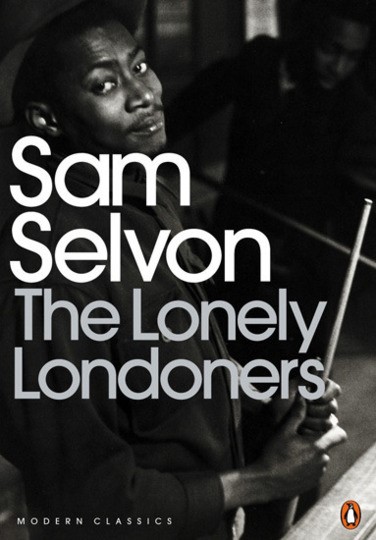 “The novels,” Rianna contended, “are linked by examination of the physical, literary and social dimensions of ‘space.’ As both the container of everyday life and an active agent or social force. The physical space of London, and how black writers conceptualize the city as a multicultural space, is central to my argument.” In each book, the black character is written into what is self evidently a white space: “Galahad walks through Piccadilly Circus while naming what he sees, and, in a metafictional gesture, White Teeth’s Samad viscerally links his colonised body with imperial space by inscribing his name in blood onto a bench in Trafalgar Square.”
“The novels,” Rianna contended, “are linked by examination of the physical, literary and social dimensions of ‘space.’ As both the container of everyday life and an active agent or social force. The physical space of London, and how black writers conceptualize the city as a multicultural space, is central to my argument.” In each book, the black character is written into what is self evidently a white space: “Galahad walks through Piccadilly Circus while naming what he sees, and, in a metafictional gesture, White Teeth’s Samad viscerally links his colonised body with imperial space by inscribing his name in blood onto a bench in Trafalgar Square.”
In conclusion, Rianna summarized the literary representations of migrants who transform their new spaces: “Spaces are defined in relation to the self, and treated as 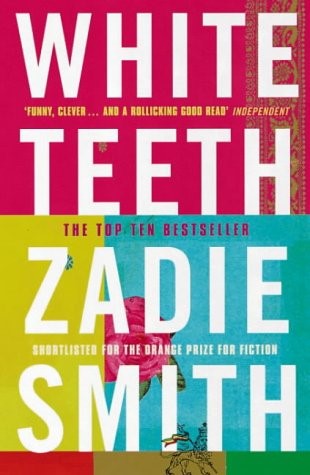 something to be assimilated into, creolised, or rejected from.” Presented in the form of literature, these various processes of assimilation highlight the paradoxical nature of Britain’s physical space: “The narratives show black immigrants and black Britons futilely searching for a compromise between discrete, segregated racial identities and the threat of dissolution through multiculturalism.”
something to be assimilated into, creolised, or rejected from.” Presented in the form of literature, these various processes of assimilation highlight the paradoxical nature of Britain’s physical space: “The narratives show black immigrants and black Britons futilely searching for a compromise between discrete, segregated racial identities and the threat of dissolution through multiculturalism.”
Outside her doctoral research, Rianna has pursued related interests. In early 2017, she co-founded Project Myopia, a website dedicated to decolonizing and diversifying university curricula. The project crowd-sources reviews of diverse materials and advocates their inclusion in academic syllabuses.
The workshop was well-attended, with a very active and insightful question and answer session following the presentation. We wish Rianna the best of luck with her future studies.
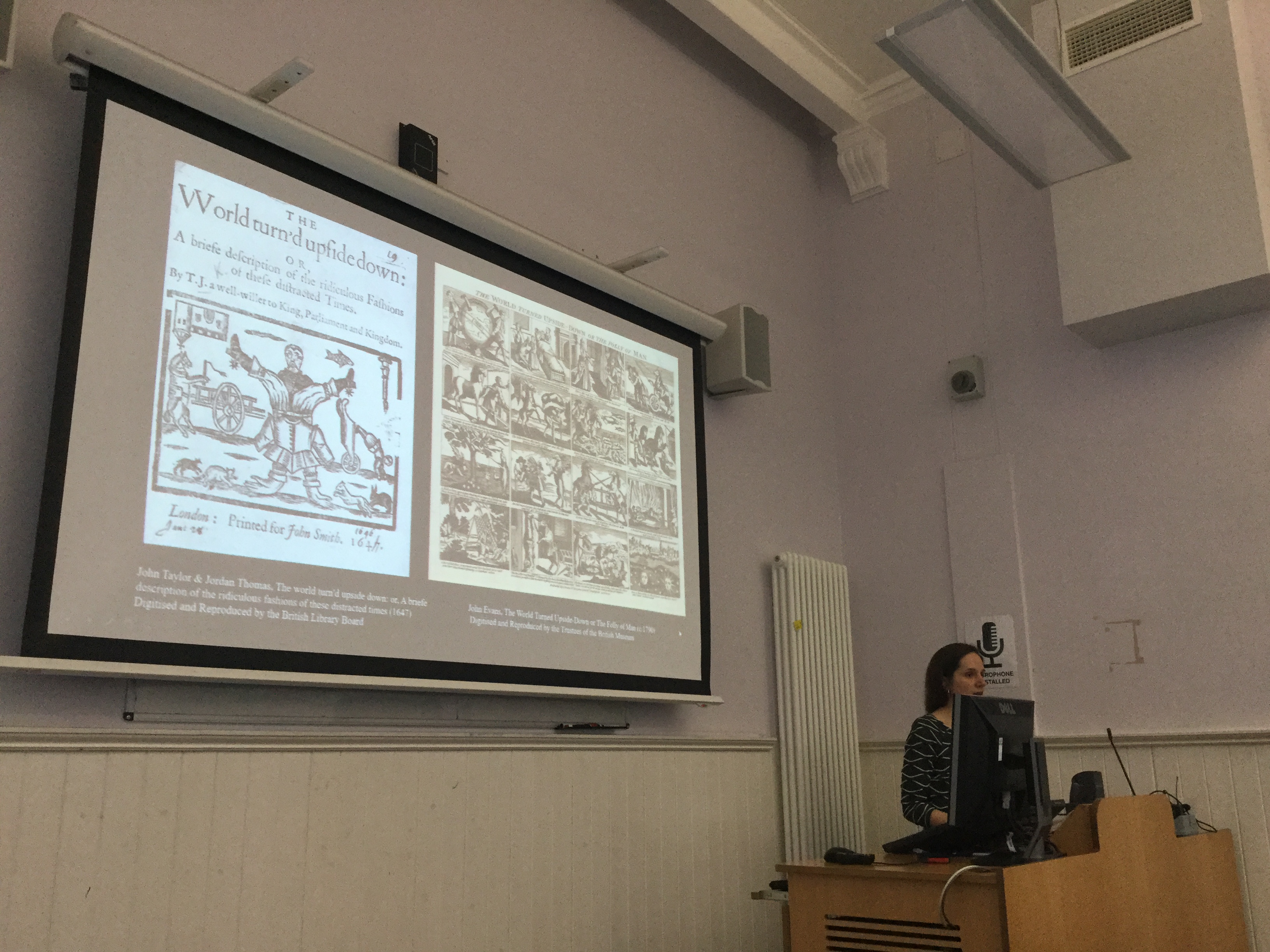

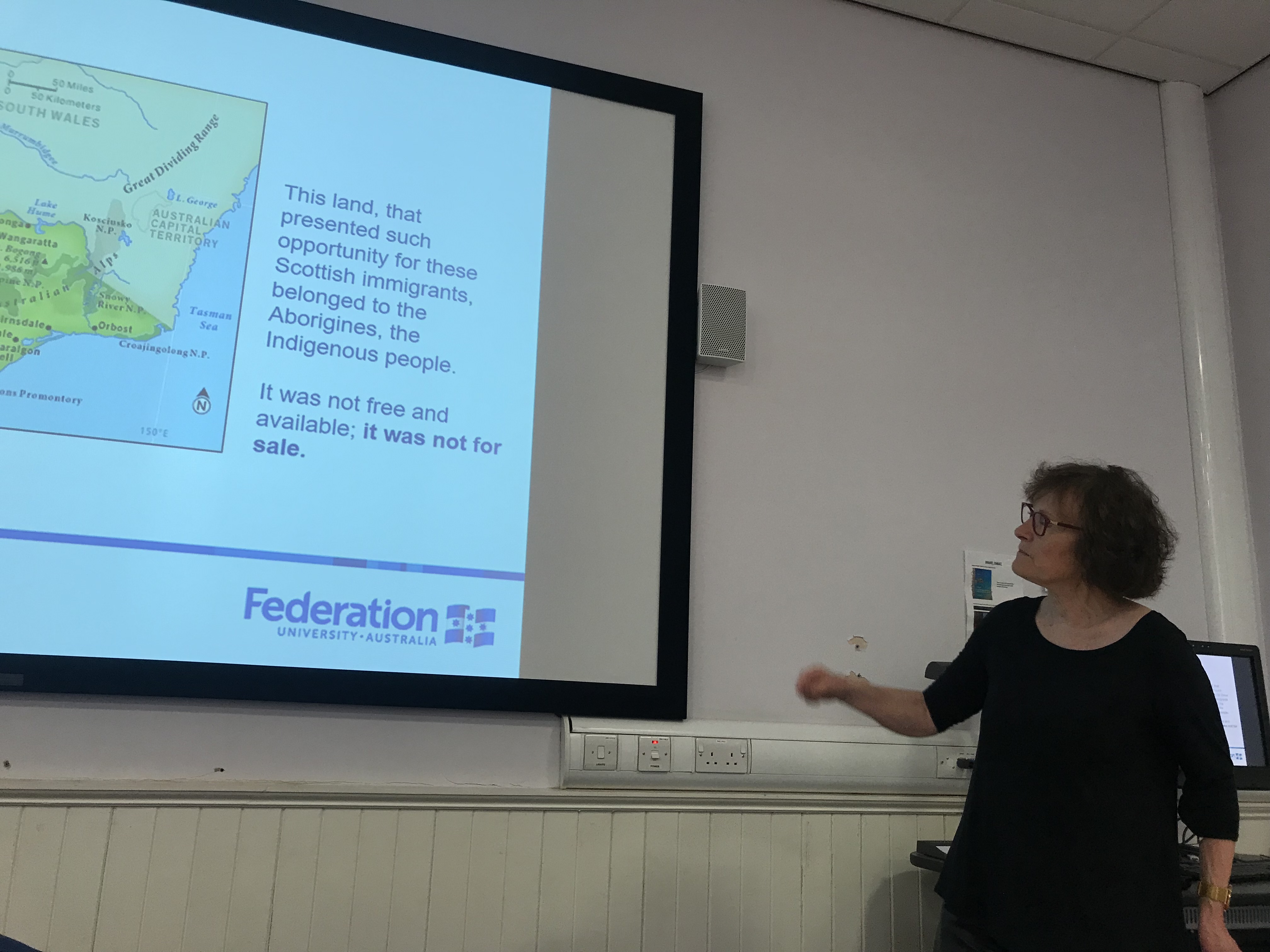
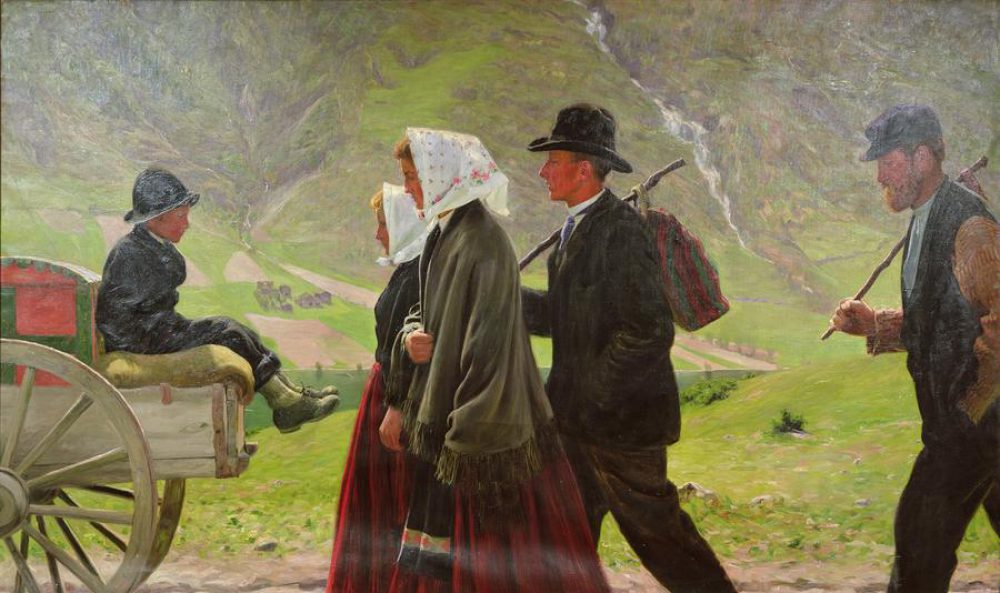
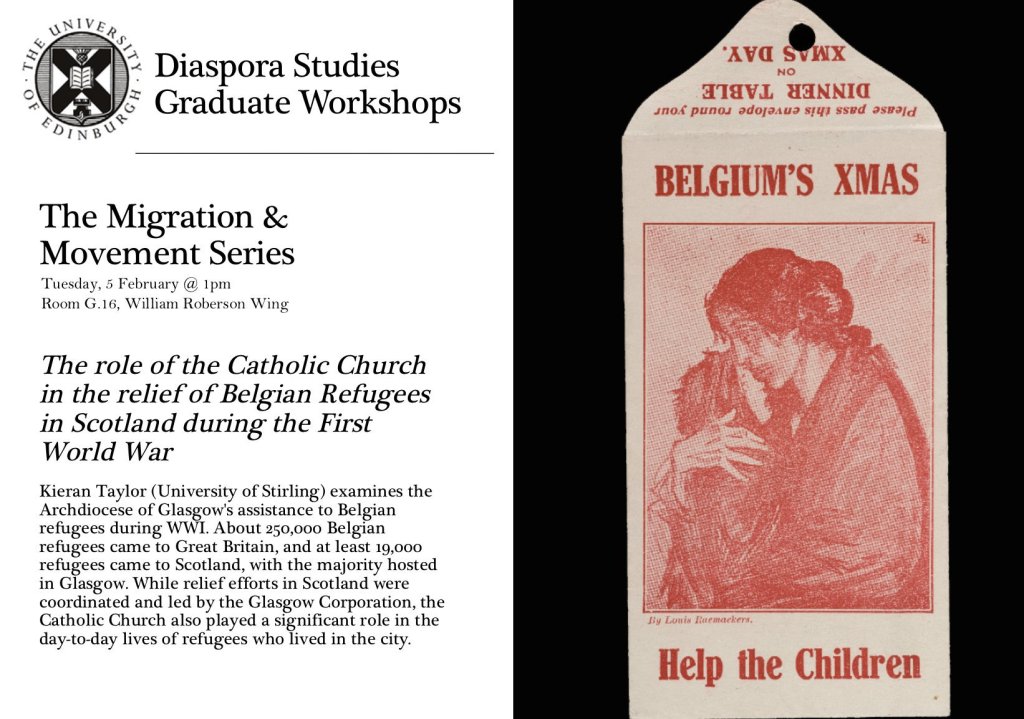
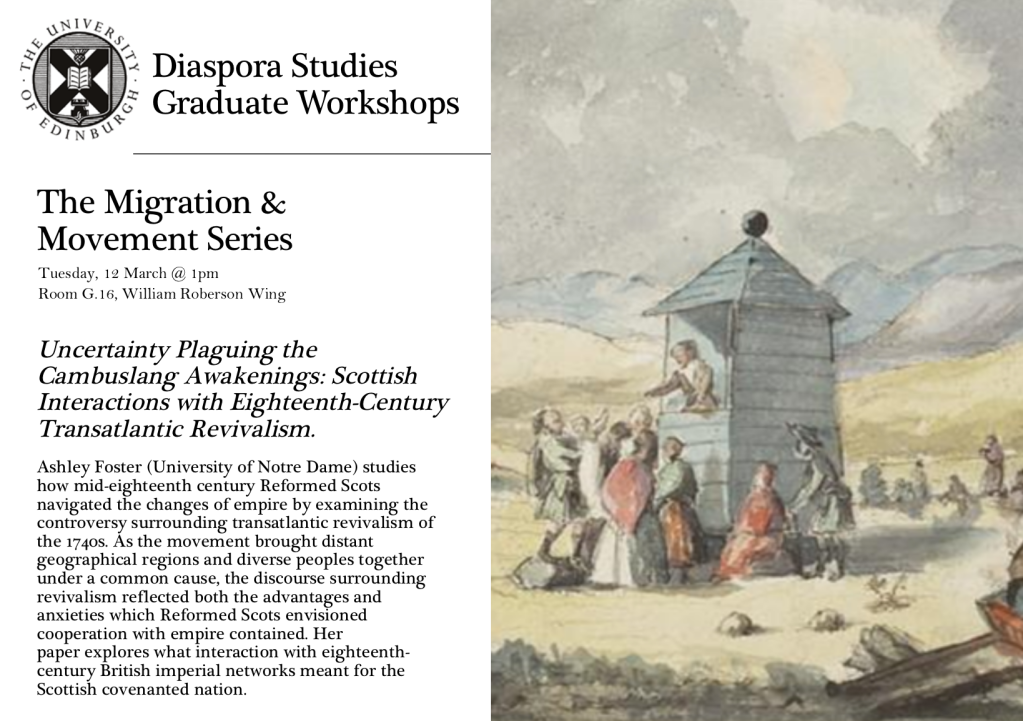
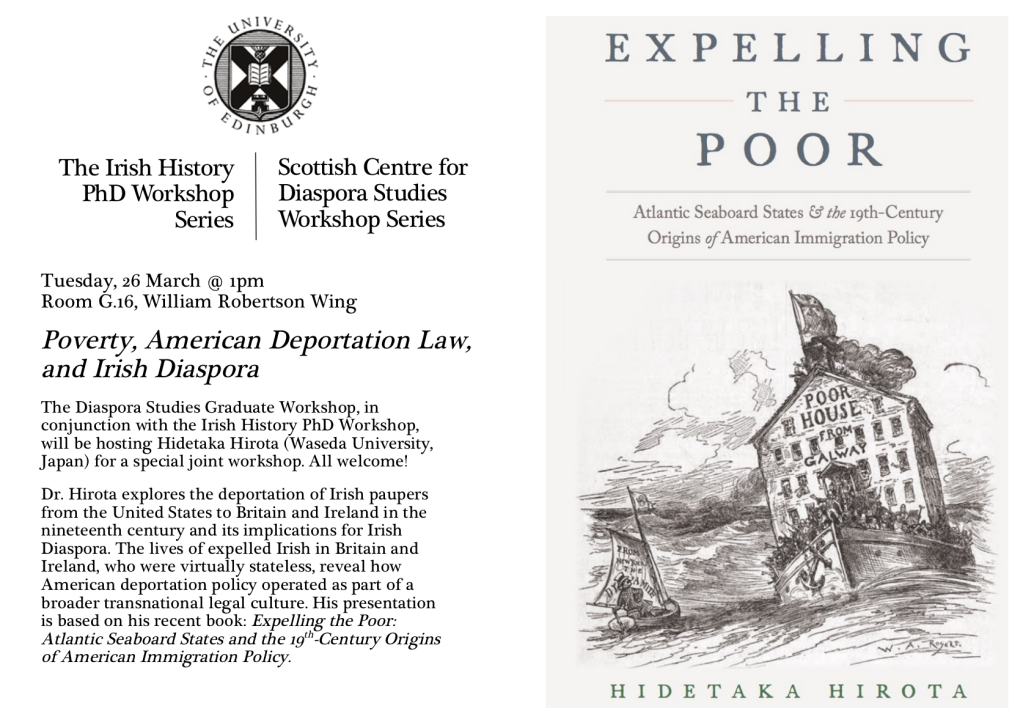
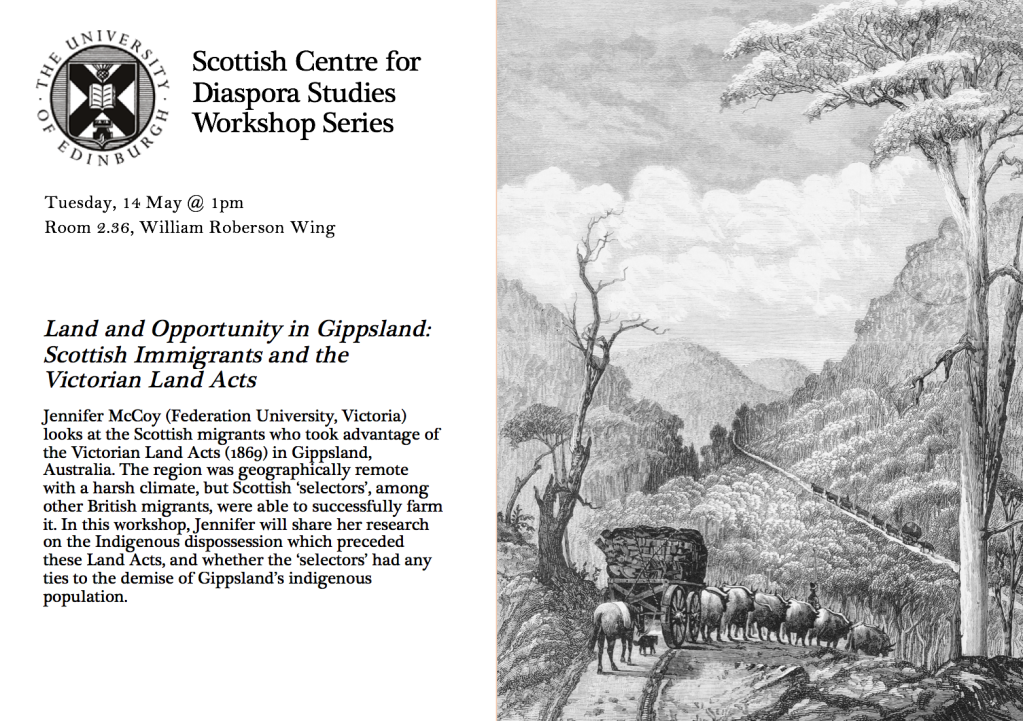
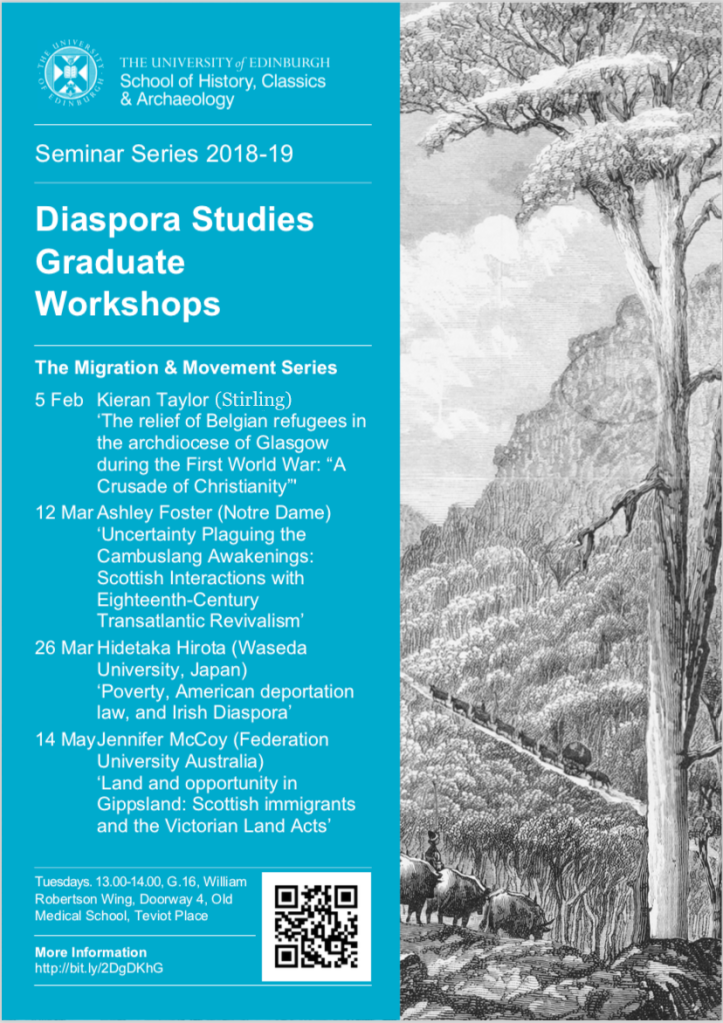
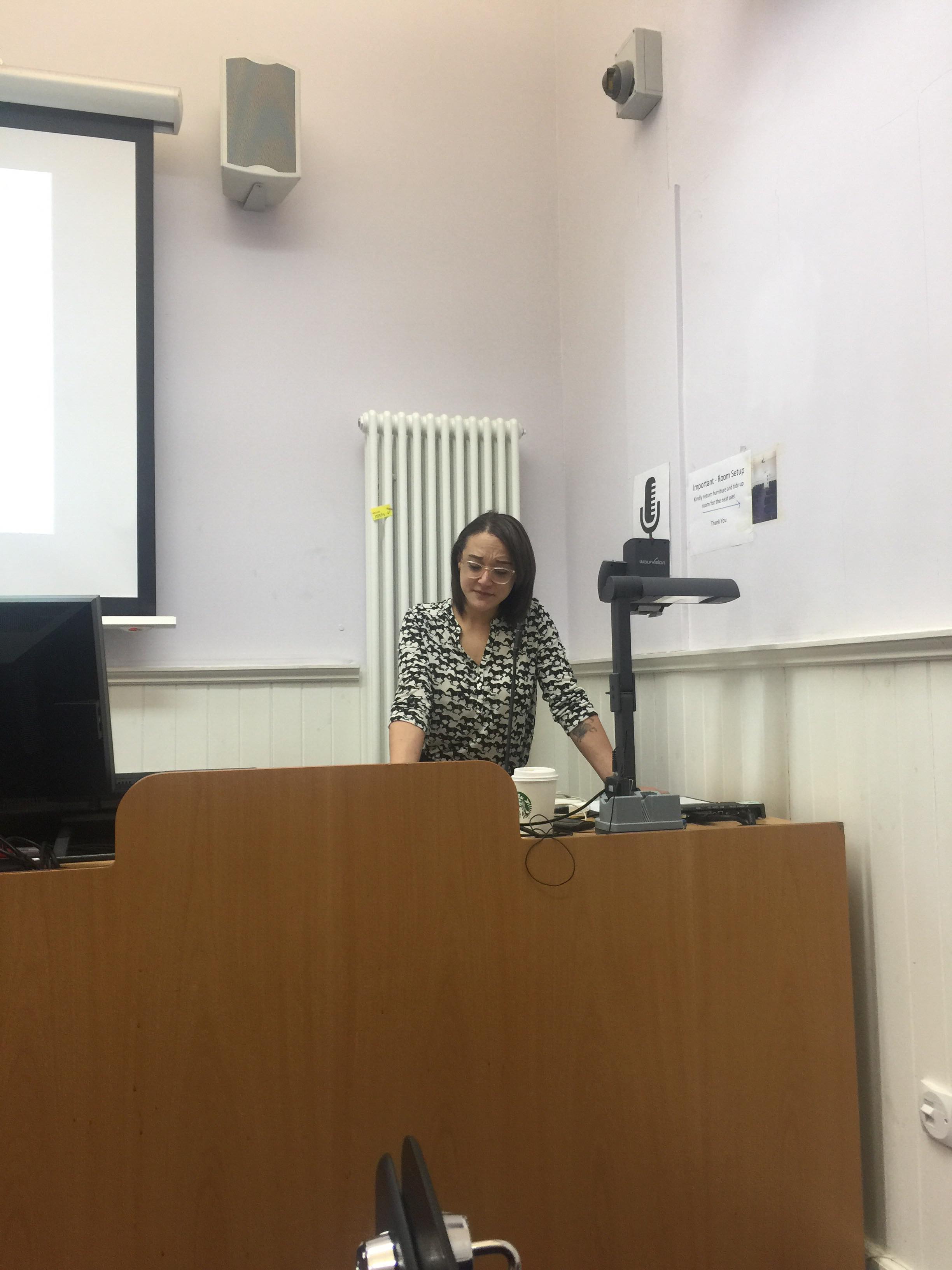
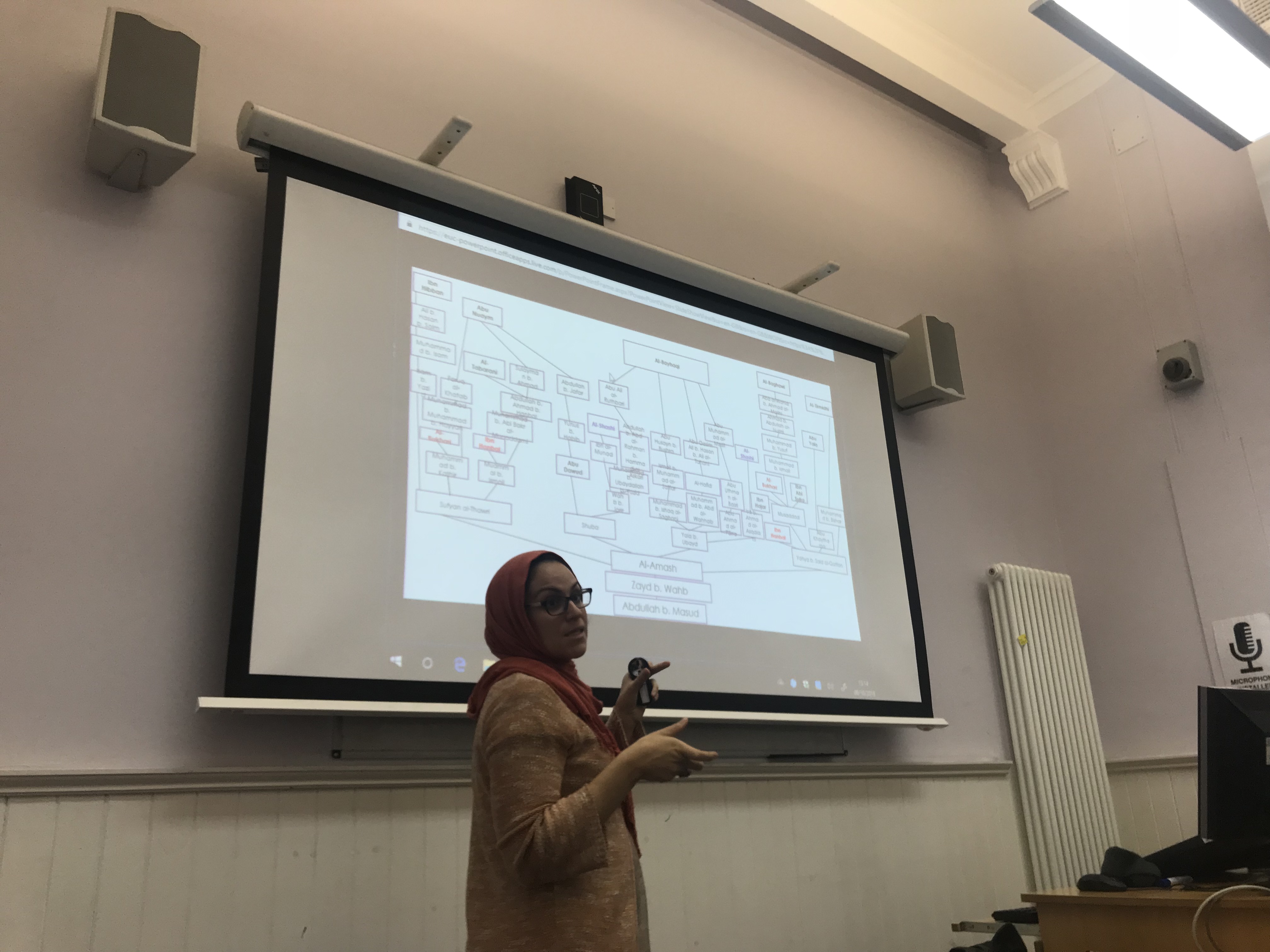
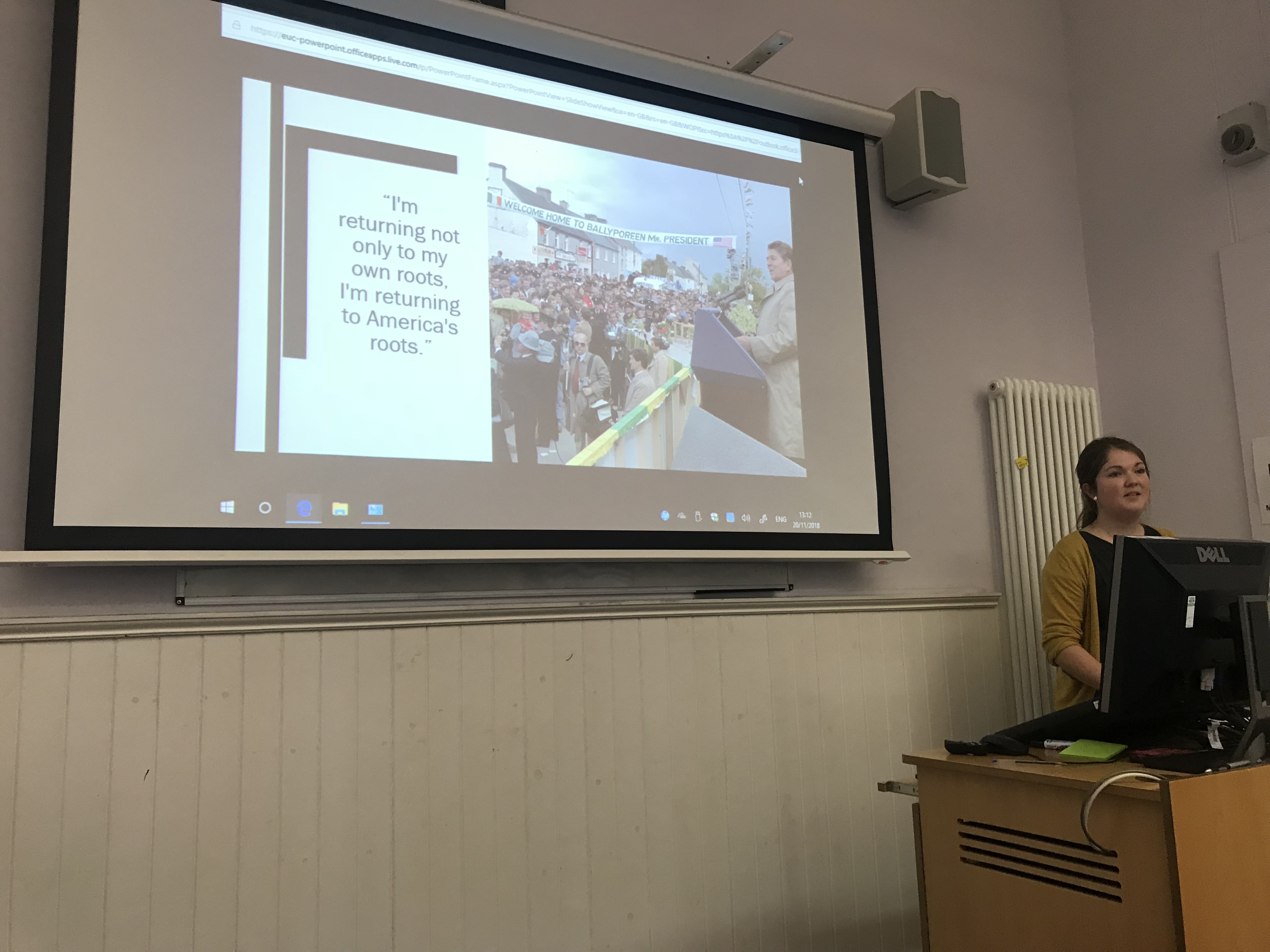
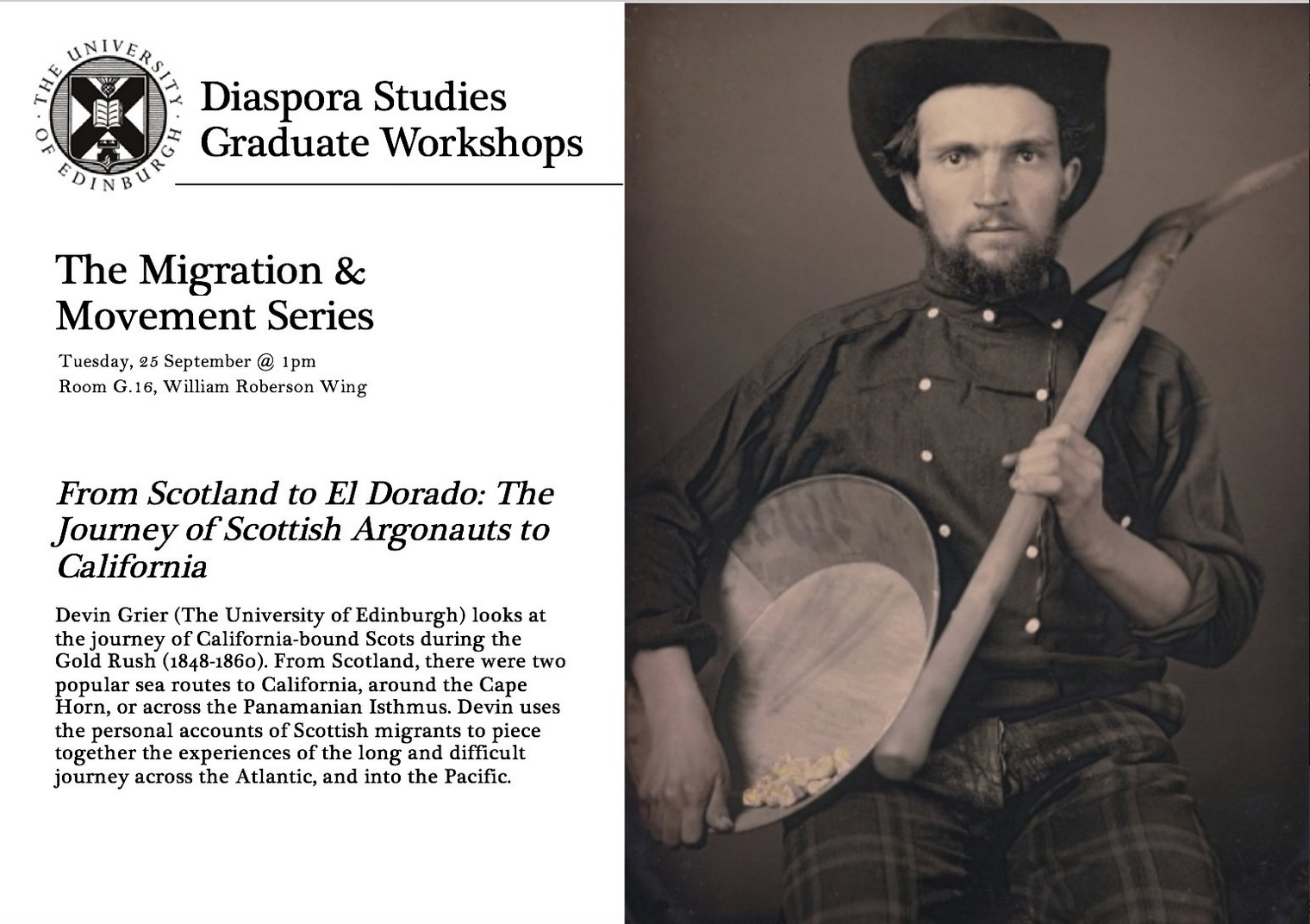
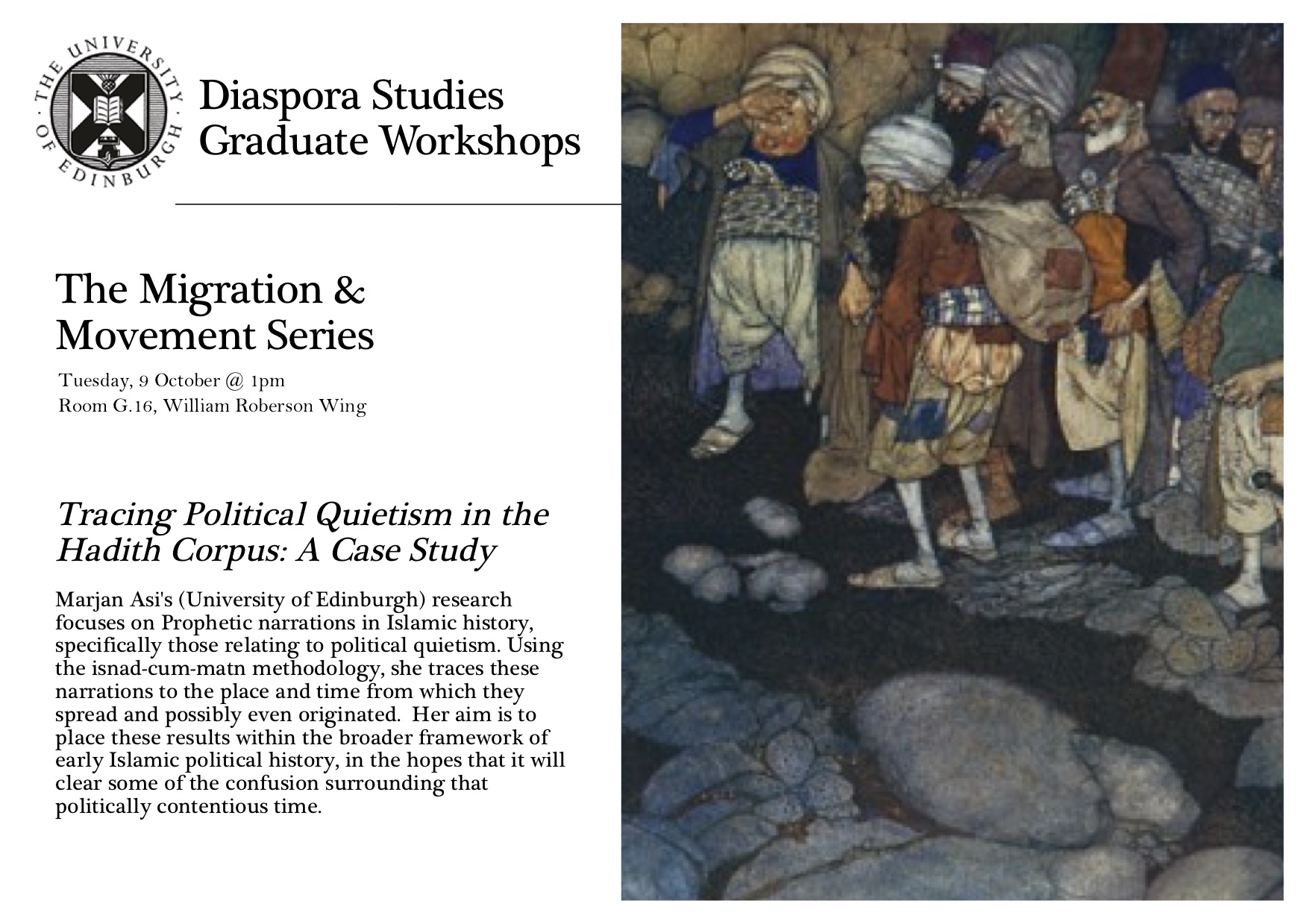
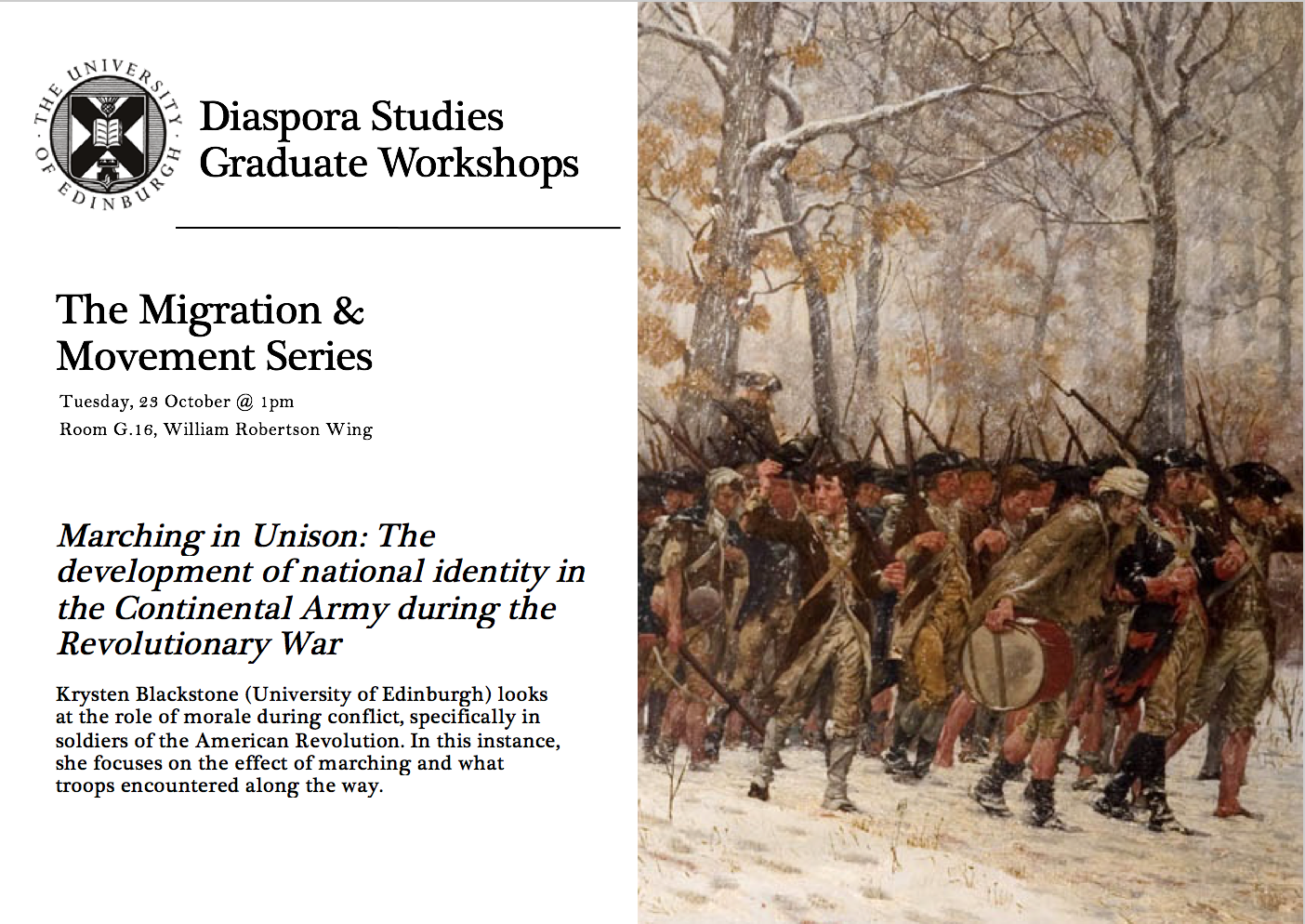

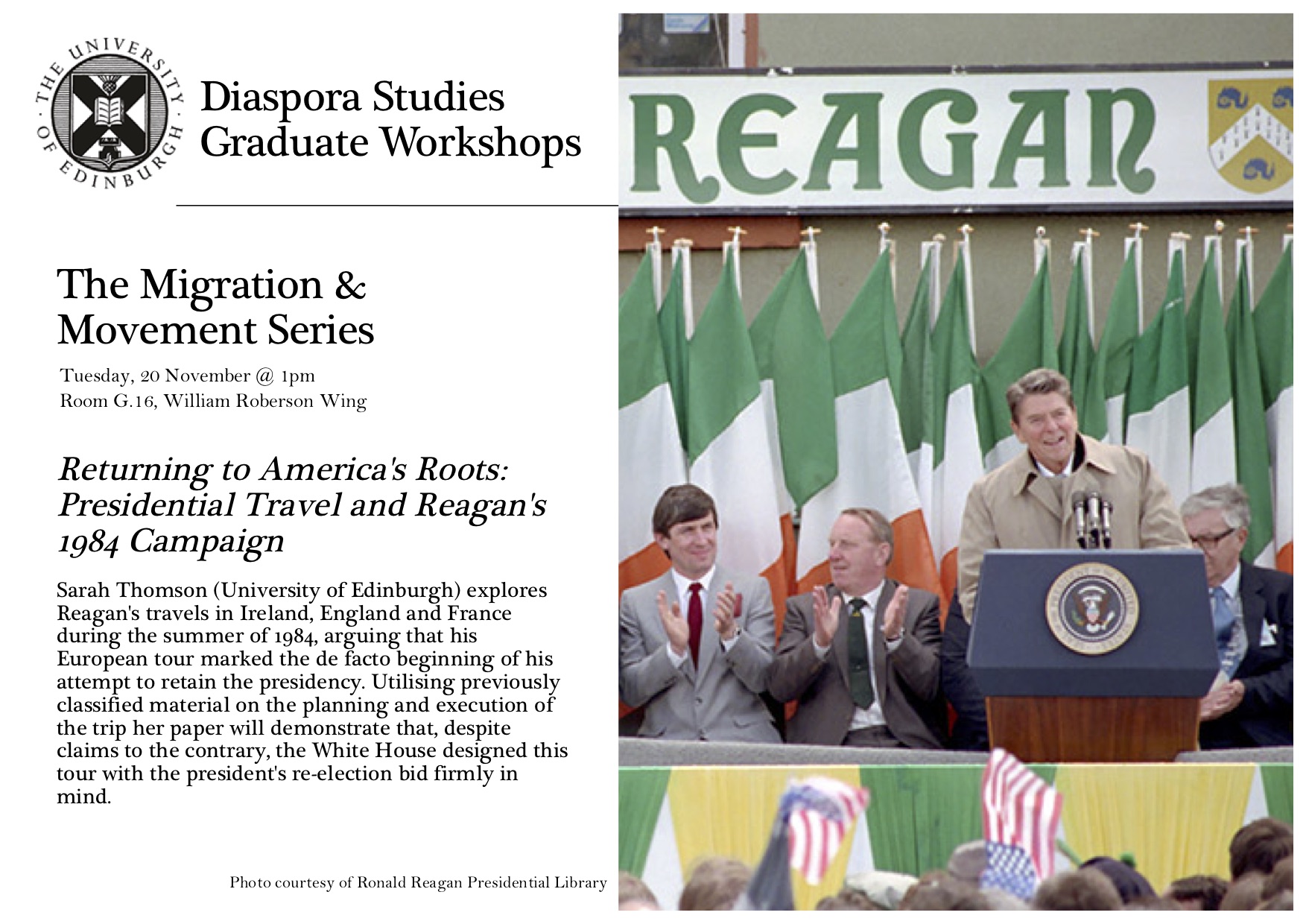
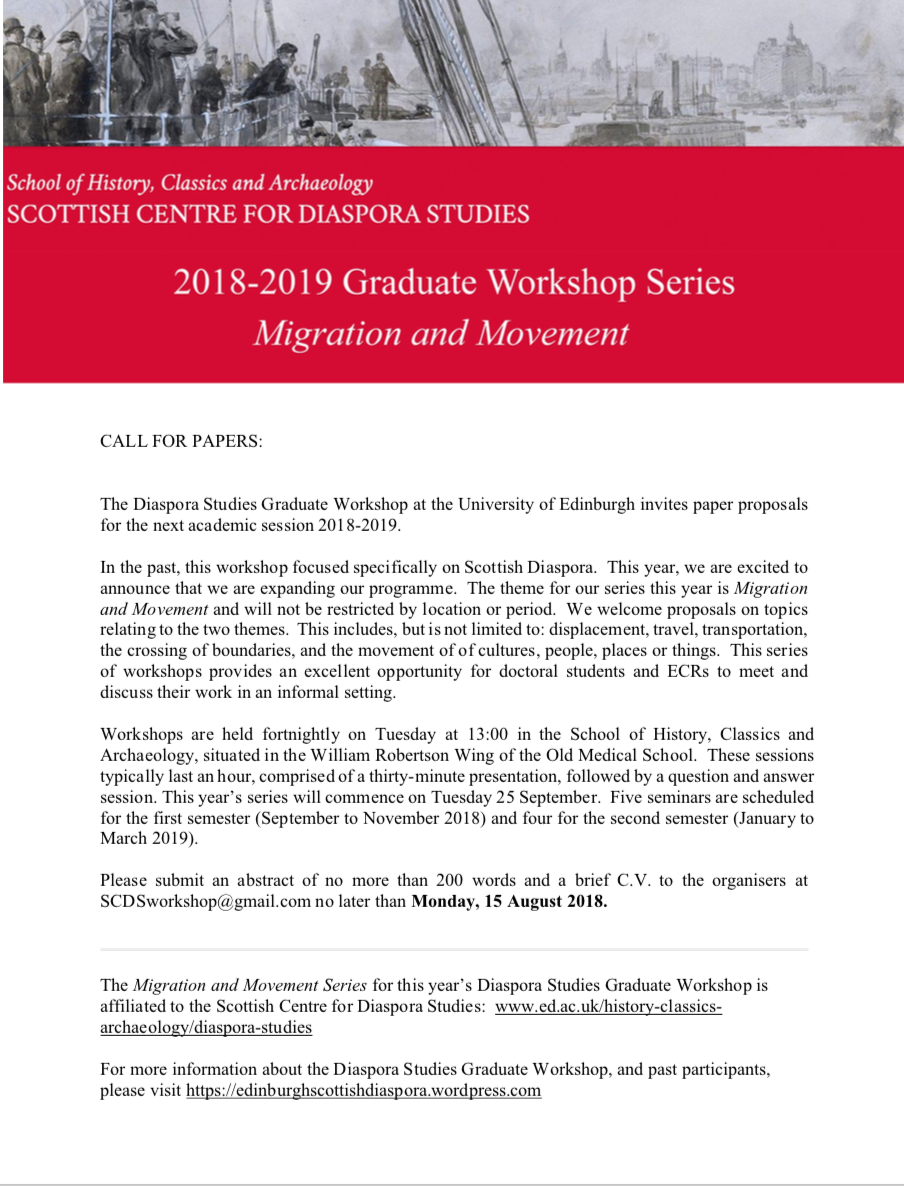
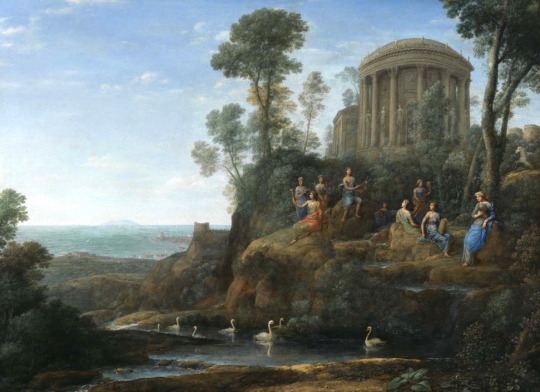 he plan for Jefferson’s grotto, consistent with the classical notion of a locus amoenus, comprised a physical and mystical experience. Each part of the cave would elicit a different emotional response; a visit represented a journey from dark to light and from cold to hot, whilst the presence of stone provided an important connection with geology and geography. As Alley argued, the grotto was a place of transformation and enlightenment in the 18th century.
he plan for Jefferson’s grotto, consistent with the classical notion of a locus amoenus, comprised a physical and mystical experience. Each part of the cave would elicit a different emotional response; a visit represented a journey from dark to light and from cold to hot, whilst the presence of stone provided an important connection with geology and geography. As Alley argued, the grotto was a place of transformation and enlightenment in the 18th century.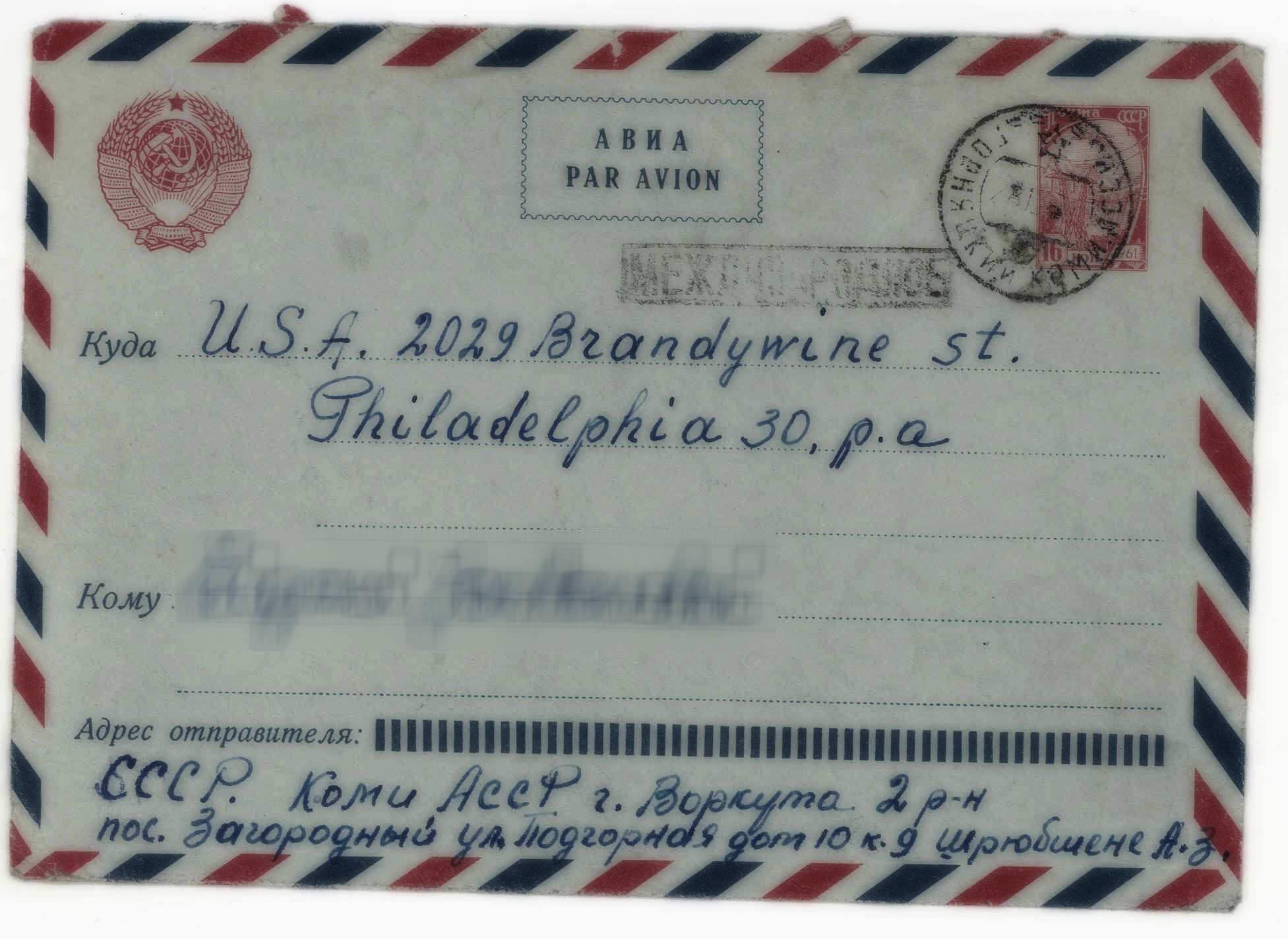 The workshop will take place at 1 pm in G 16 in the William Robertson Wing of the Old Medical School in Teviot Place.
The workshop will take place at 1 pm in G 16 in the William Robertson Wing of the Old Medical School in Teviot Place.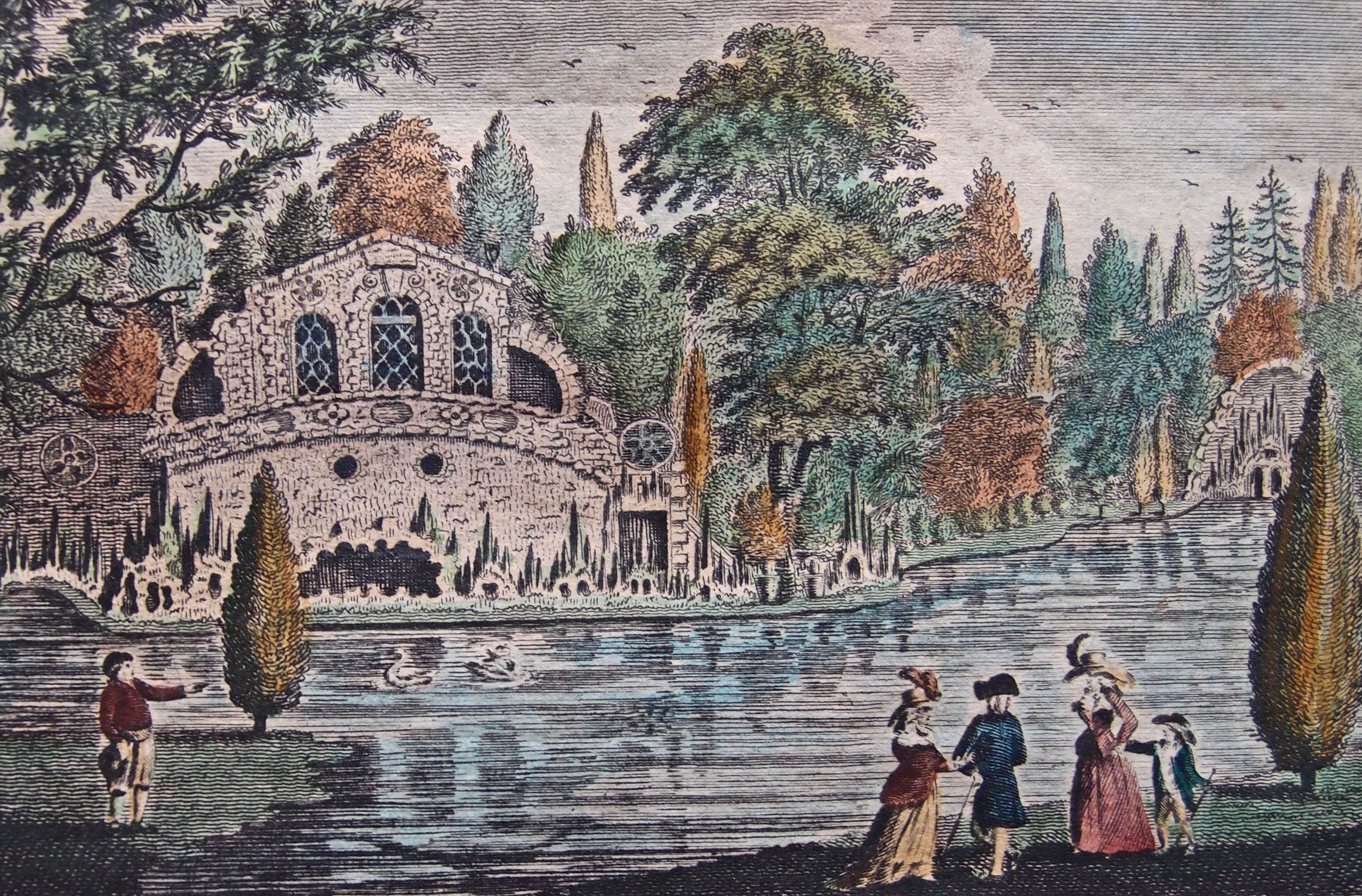
 The experience of blacks in postcolonial Britain provided the starting point for Rianna’s presentation. Whilst the arrival of the SS Empire Windrush in 1948, carrying almost 500 Jamaicans, was not the first landfall made by people of African descent to Britain, it marked the first influx of widespread migration from the West Indies to the United Kingdom. In the mid-twentieth century, the increase in Afro-Caribbean immigrants provoked a political backlash from those intent on preserving Britain’s imperial image. Rianna argued that anxieties among the white population resulted from a combination of racial and national identities. In order to differentiate themselves from the West Indians, a familiar white ‘we’ was constructed against a dangerous ‘black’ unknown. Because race and nationality became linked, being ‘British’ was predicated on white history. Rianna argued that it was at this point that Britain “was beginning to be disrupted by the black other – or more accurately by a black other that dared to enter white space.”
The experience of blacks in postcolonial Britain provided the starting point for Rianna’s presentation. Whilst the arrival of the SS Empire Windrush in 1948, carrying almost 500 Jamaicans, was not the first landfall made by people of African descent to Britain, it marked the first influx of widespread migration from the West Indies to the United Kingdom. In the mid-twentieth century, the increase in Afro-Caribbean immigrants provoked a political backlash from those intent on preserving Britain’s imperial image. Rianna argued that anxieties among the white population resulted from a combination of racial and national identities. In order to differentiate themselves from the West Indians, a familiar white ‘we’ was constructed against a dangerous ‘black’ unknown. Because race and nationality became linked, being ‘British’ was predicated on white history. Rianna argued that it was at this point that Britain “was beginning to be disrupted by the black other – or more accurately by a black other that dared to enter white space.” “The novels,” Rianna contended, “are linked by examination of the physical, literary and social dimensions of ‘space.’ As both the container of everyday life and an active agent or social force. The physical space of London, and how black writers conceptualize the city as a multicultural space, is central to my argument.” In each book, the black character is written into what is self evidently a white space: “Galahad walks through Piccadilly Circus while naming what he sees, and, in a metafictional gesture, White Teeth’s Samad viscerally links his colonised body with imperial space by inscribing his name in blood onto a bench in Trafalgar Square.”
“The novels,” Rianna contended, “are linked by examination of the physical, literary and social dimensions of ‘space.’ As both the container of everyday life and an active agent or social force. The physical space of London, and how black writers conceptualize the city as a multicultural space, is central to my argument.” In each book, the black character is written into what is self evidently a white space: “Galahad walks through Piccadilly Circus while naming what he sees, and, in a metafictional gesture, White Teeth’s Samad viscerally links his colonised body with imperial space by inscribing his name in blood onto a bench in Trafalgar Square.” something to be assimilated into, creolised, or rejected from.” Presented in the form of literature, these various processes of assimilation highlight the paradoxical nature of Britain’s physical space: “The narratives show black immigrants and black Britons futilely searching for a compromise between discrete, segregated racial identities and the threat of dissolution through multiculturalism.”
something to be assimilated into, creolised, or rejected from.” Presented in the form of literature, these various processes of assimilation highlight the paradoxical nature of Britain’s physical space: “The narratives show black immigrants and black Britons futilely searching for a compromise between discrete, segregated racial identities and the threat of dissolution through multiculturalism.”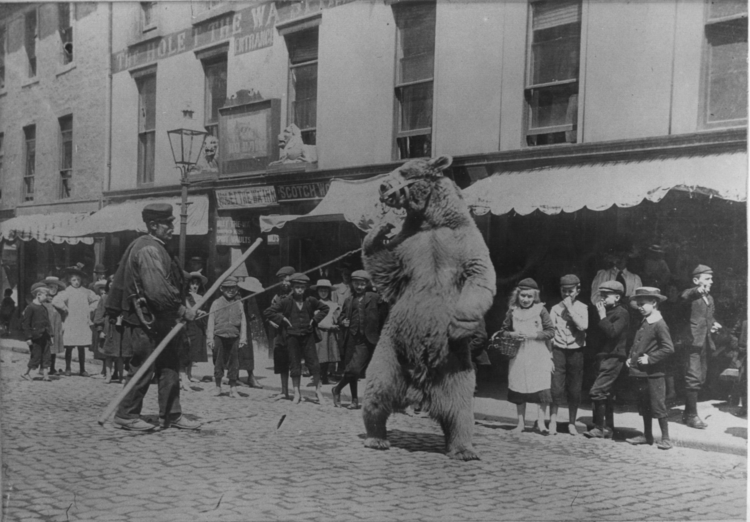
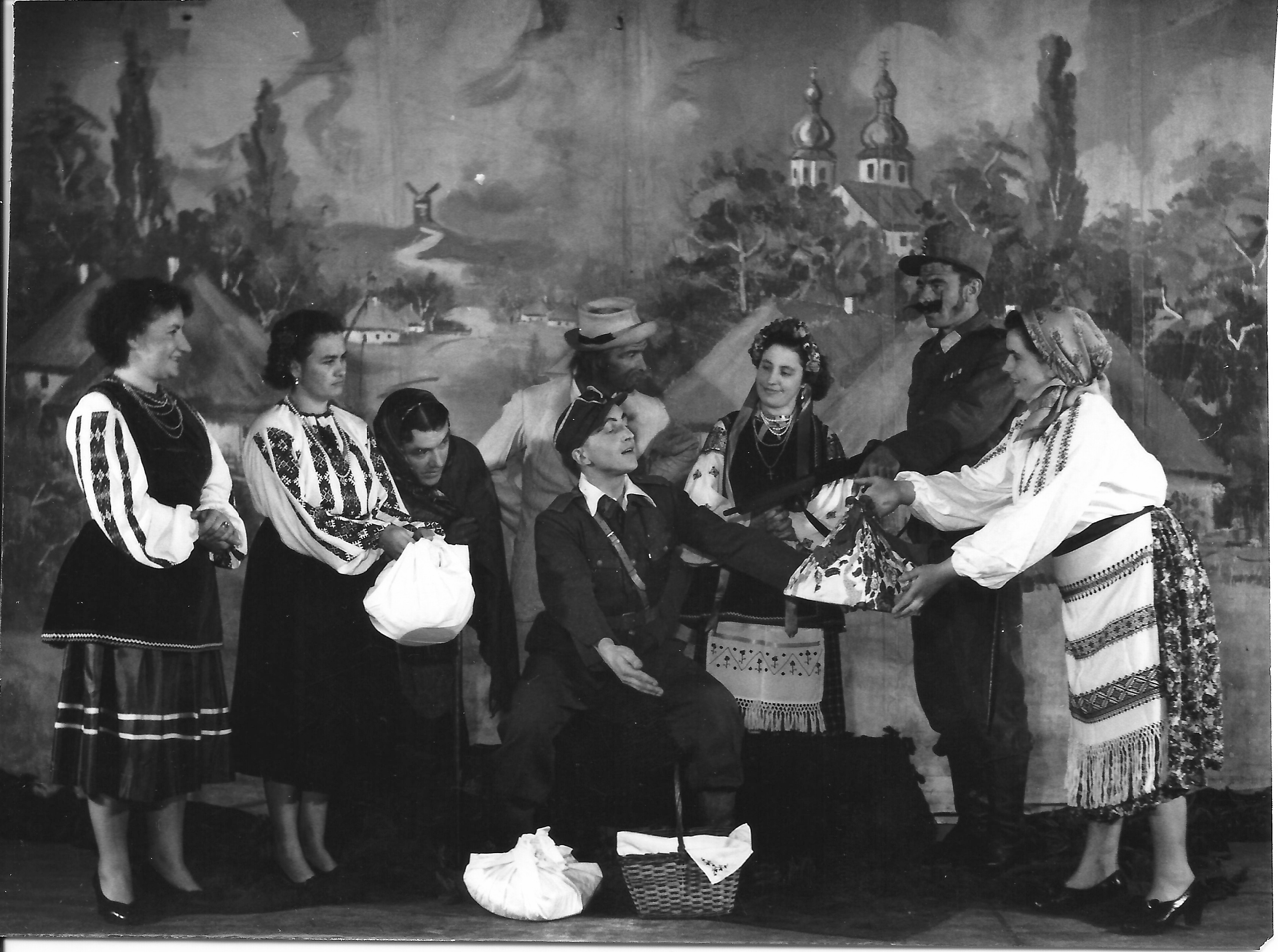 Peter also presented a handful of extraordinary historic photographs of the Ukrainian community in Scotland. Much of Peter’s research has been coloured by the response to his ongoing photo exchange project. His photo exchange holds a wealth of material for those interested in the Ukrainian community. Anyone wishing to add to the collection, or inquire about specific images, can email Peter at
Peter also presented a handful of extraordinary historic photographs of the Ukrainian community in Scotland. Much of Peter’s research has been coloured by the response to his ongoing photo exchange project. His photo exchange holds a wealth of material for those interested in the Ukrainian community. Anyone wishing to add to the collection, or inquire about specific images, can email Peter at 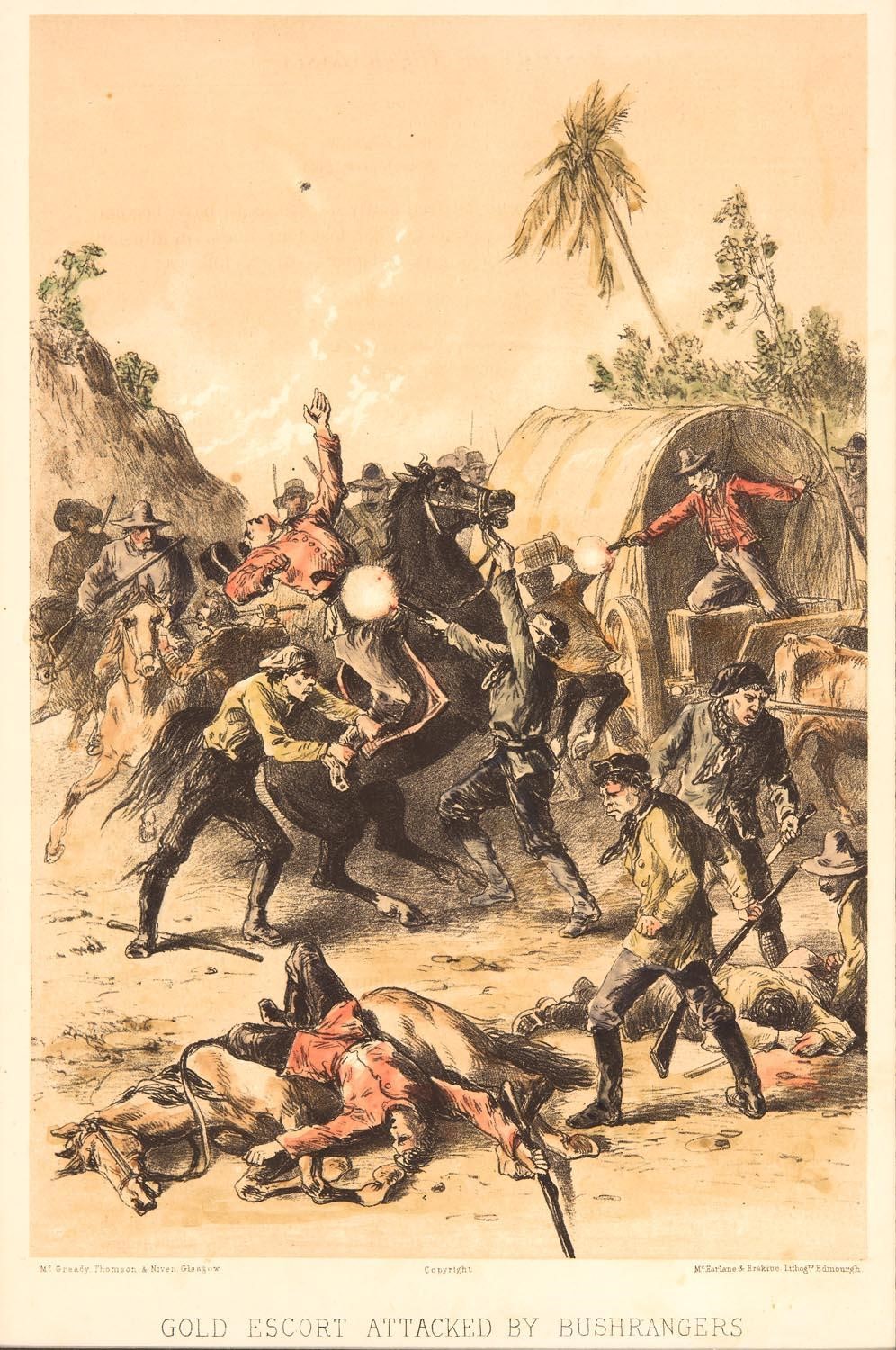
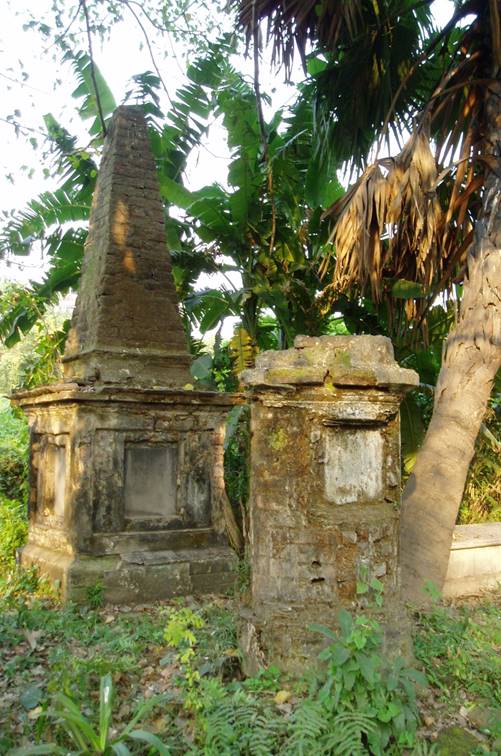 The Scottish cemetery, which was established in 1820, is associated with the nearby St Andrews Church. Its graves and memorials provide an historical snap shot of the many Scots living and working in Kolkata during the 19th and 20th centuries. Many graves were constructed and designed by Scottish sculptors. By 2008, however, when the team began conservation work, the cemetery had become extremely overgrown.
The Scottish cemetery, which was established in 1820, is associated with the nearby St Andrews Church. Its graves and memorials provide an historical snap shot of the many Scots living and working in Kolkata during the 19th and 20th centuries. Many graves were constructed and designed by Scottish sculptors. By 2008, however, when the team began conservation work, the cemetery had become extremely overgrown.